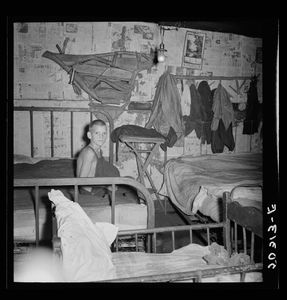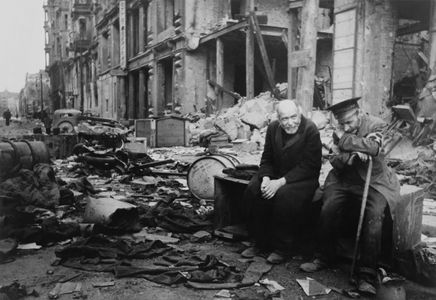Jump-starting Discussion Using Images
Graduate Teaching Blog Post
Contributed by Phillippa Pitts
(5 minute read)
Q:I’ve heard that starting class by asking students to discuss an image can help get students talking, even in a non-arts based course. What are your suggestions for teaching with images?
A: In almost every conversation that I’ve heard about “opening up a good discussion” and “encouraging students to speak more,” someone suggests discussing an image. Usually it is because, in their words, “there are no wrong answers.” But—as anyone who has optimistically put up an image and heard only crickets in response knows—there do seem to be wrong questions.
Fortunately, there are scores of resources and strategies available to get you started teaching with images in ways that will open up discussion and develop your students’ critical thinking skills. Here are two of my favorites: one very easy for you and for your students, and one a little more challenging for both!

Easy
Ten Times Two is a looking exercise developed by Harvard’s Project Zero. It’s as simple as it sounds. Students independently look at an image for 30 seconds and write down ten things that they notice. Then they pause, reflect, and then repeat, adding another ten items to the list. The goal is to help students slow down their looking process and observe more closely, fostering a deeper engagement with the visual content. This is useful across disciplines: bringing out richer conversations about not only what is depicted but how, often leading into conversations about perspective, bias, and representation. But it also functions as an advance organizer, letting students collect and organize their thoughts before conversation begins, which sets up many quieter and neurodiverse students for success. It’s very flexible. You can change the number: asking students to rapid-fire list as many words as they can. Or, instead of reflecting alone, they can share their initial lists with a partner before diving in again. Or each share 1-2 words with the whole group, perhaps amassing an impromptu list on the board. Like most good teaching: if the principle is there, the form can vary!

Challenge!
Making Inferences is a visually-based spin on an old idea. The Learning Network describes it as a way to raise student awareness about a skill they use every day: collecting clues to make predictions or hypotheses about unknown material. This is a great technique if you want to bring in images which are odd, confusing, or just in that proximal learning zone for your students (things that are just pushing that upper edge of what they know and can do).
To set up this discussion, don’t ask the students what this image is. Ask them what they can infer based on their prior knowledge and the limited amount of information in front of them. In this way, you, as the instructor, can ward off some of the students’ anxiety about “being wrong” by presenting the task as one in which they should be puzzling, guessing, and feeling uncertain. Even if students’ answers are wrong, research shows that making predictions is a cognitive activity that provokes curiosity and stimulates the memory-making parts of the brain. (For more on this, James Lang’s chapter on prediction in Small Teaching is a wonderful resource.) Incorrect predictions won’t hurt students. Just make sure that you don’t leave major misunderstandings hanging for too long — perhaps return to those ideas at another point in your lecture, or show the image again at the end of class to ask how students’ thinking may have changed.
There are two reasons that this is a little more challenging. First, you will have to think harder about the image you choose: You’ll need to find something provocative, mysterious, or puzzling for a really engaging conversation to occur. Second, this requires more bravery from your students. Even though you are overtly welcoming speculation, students may be nervous to share. Consider asking them to complete the activity in pairs, so that they can gently “peer review” their thoughts before offering them up to the whole class’s scrutiny.
I hope these ideas get you off to a good start in bringing images into your classroom in a way that both adds depth to the content you’re covering and helps foster the kind of classroom community you’d like to create. And remember: not all knowledge has to come from you! Enlisting your students’ aid in finding and presenting these images could be a whole other blog post…
Good luck!
Phillippa
